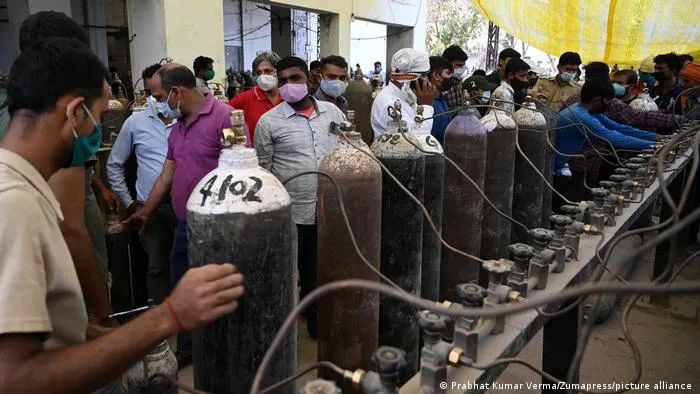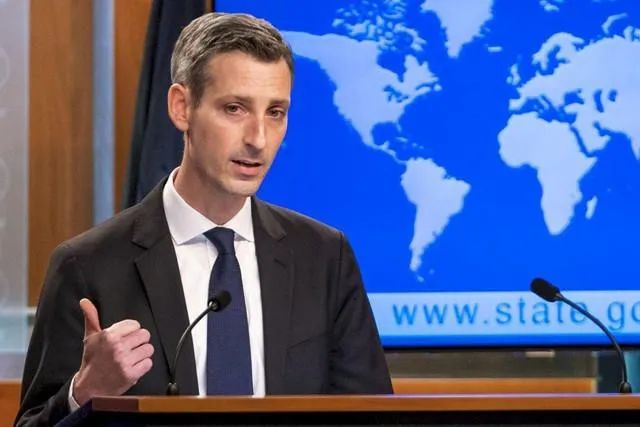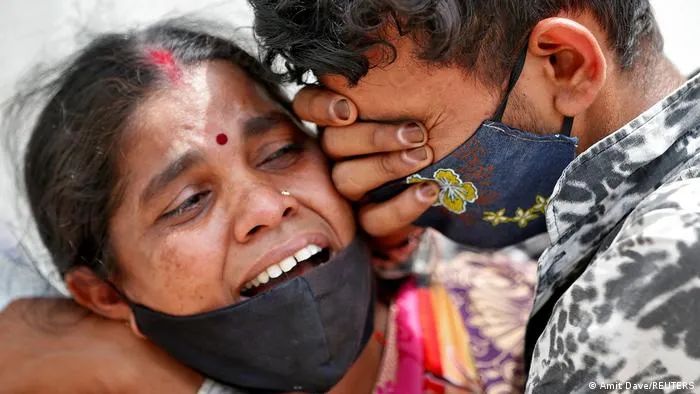“India is like a boat floating alone in the sea.”
Indian media used such a headline to describe the country, which is currently recovering from a second wave of severe outbreaks.
How could India have wandered alone, and where have the would-be allies who had taken India to heaven some time ago gone?
According to the latest news from India’s health department on the 25th, in the past 24 hours, India has added 349,691 new confirmed cases of pneumonia, for four consecutive days to set a new global record for confirmed cases, 2,767 new deaths, an average of 1 death every 4 minutes, and health experts believe that the actual death toll may be 2-5 times the reported death toll.
Two people crowded into a hospital bed, the old man struggled to find hospital treatment and died in the back seat of the car, open-air burning of smoke. Over the past few days, we’ve seen a lot of reports of tragedy going on around this country, but it’s the past, and it’s the future that’s more uncertain.
According to media reports, India’s current shortage is medical oxygen and vaccine raw materials. Oxygen reserves are running out at several hospitals in the capital New Delhi, families of patients are lining up in front of hospitals carrying empty oxygen tanks, military transport planes and trains are being used to transport oxygen machines, and there are even rumours that oxygen equipment in the cockpits of the Indian Air Force’s Shining Fighter jet has been removed for emergency response.

In the face of state competition for oxygen-producing equipment and even half-way robberies, the Delhi High Court said that if any official of the central, state or local governments obstructed access to or supply of oxygen, “we would hang that person”.
The World Health Organization has estimated that when the number of confirmed cases worldwide rises by millions, about 90,000 cans of oxygen are needed every day, or about 6 cubic meters per tank. Based on India’s current daily growth of more than 300,000, it is calculated that 30,000 cans of oxygen, or 180,000 cubic meters, are needed every day, at least 234,000 tons per day, based on 1.3 tons of liquid oxygen per cubic meter.
India currently buys medical oxygen mainly through Singapore, the Gulf states and Germany, but it is clear that it pays for it. So we can’t help asking, where have the “quasi-allies” such as the United States, Japan and Australia, which fought india so hard?
” (The United States and India) is one of the important partnerships of the 21st century”, “the U.S.-India relationship is a bastion of freedom and openness in the Indo-Pacific region” and the strategic partnership between India and the United States is “a new force for the world”.
When U.S. Defense Secretary Austin visited India last month, the time has come to test the true feelings of the two countries, after a touting of U.S.-India relations.
The United States is also considered the most capable country to support India. The U.S. has accumulated more than 20 million AstraZeneca vaccine stockpiles and signed 300 million doses of purchase agreements, in addition to 100 million doses with Johnson and Johnson, a significant portion of which are now lying in warehouses due to safety disputes, and Indian media have called for the U.S. to share the vaccines with India.
Meanwhile, U.S. President Joe Biden invoked the Defense Production Act in February to restrict raw material exports to boost domestic vaccine production, and indian foreign minister Su jae-in to Indian scientists are continuing to call on the U.S. to liberalize restrictions. However, a U.S. State Department spokesman said Tuesday that the Biden administration’s top priority is to meet the American people’s need for vaccines, that is, “America first.”

The United States from the government to the media has previously touted India, there are a large number of Indian immigrants in the United States, the current Vice President Harris has Indian ancestry, thought that the United States with a close indian seems to have received a big slap, some media said that the Attitude of the United States in New Delhi’s official circle caused panic, Indian netizens on social media criticized the U.S. government’s position, the U.S. media also called on the U.S. media not to forget the “important ally against China.”
In the face of public pressure, U.S. Secretary of State John Blinken said on Twitter on the 25th that he has “deep sympathy” for the Indian people and is working closely with the Indian government to “quickly provide more support to the people of India and india’s medical heroes.”
In view of the outbreak in India, Australian Prime Minister Morrison announced on the 22nd, will reduce the number of flights in India by nearly a third, and strict restrictions on outbound passengers. The move is seen as a “heavy blow” to the group, given the large number of Indians in Australia.
The president of the Indian Australians Council said the new restrictions created great uncertainty for the Indian community. There is no time for cancellations to be announced, nor is there any guarantee that there will be more stringent measures next.
Mr Morrison was even asked if the Australian government had given up on Indians in Australia, and he responded that Australia’s success in fighting the pandemic was due to good border controls.
On the Indian outbreak, Chinese Foreign Ministry spokesman Zhao Lijian said Wednesday that China firmly supports the Indian government and people in fighting the pandemic and is willing to provide support and assistance in accordance with India’s needs and is maintaining communication with India in this regard.
However, the Times of India published on the 23rd entitled “China is willing to help, but India is looking elsewhere for oxygen” article, said an anonymous Indian government source said that India does not rule out contact with Chinese private enterprises to buy medical supplies, including medical oxygen, but the government believes that the ability to purchase from Singapore, Europe, the Gulf states and other places, “China is not the first choice for safe medical supplies (buyers).
The Hindustan Times recalls that India supplied China with 15 tons of medical supplies last year, including masks, gloves and emergency medical equipment, at a cost of about Rs.211 billion. Chinese Ambassador to India Sun Weidong expressed appreciation for India’s support and solidarity with China at a press conference shortly afterwards. When India faced its first severe outbreak last April, China also sent dozens of planes to deliver medical supplies in return. Soon after, however, military frictions broke out between China and India along the border, and relations between the two countries plummeted to freezing point. Nearly a year later, the two countries are still trying to resolve the situation.
Three feet of ice is not a day’s cold. India is facing a deep pandemic crisis, from the Western media touted the “anti-pandemic power” position suddenly fell, not a “viral ferocity” can be fully explained, but also its international and domestic situation of a series of miscalculations caused by the accumulation. Hopefully India through this time, can recognize who is really supposed to fight for friends, who are plastic friendships.



